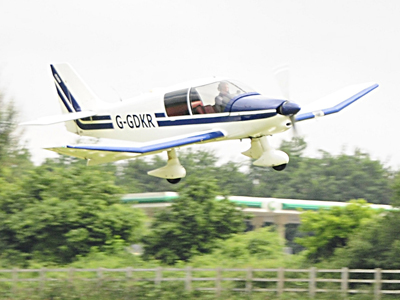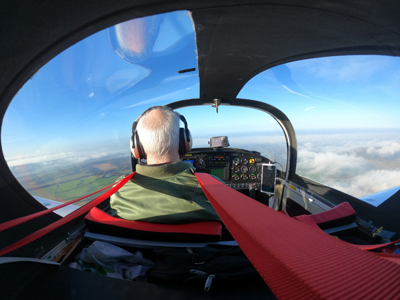Pilot

My flying started quite late in life. I've been an aerospace engineer all my working life, but didn't start flying in any form until I was in my 50's. I began flying a paraglider, always with the intention of moving to a paramotor, as there aren't many suitable hills to fly from near my home in Hertfordshire. Paramotors are wonderful to fly - imagine sitting on a canvas seat, high above the ground, with nothing but air beneath you. Some people's worst nightmare, but heaven to me. There are a couple of major problems, though. Paramotors can only fly in light winds, as the airspeed of 25mph limits progress when flying into wind. They are also fiendishly hard to get into the air. I had been flying from London Colney airfield, near St Albans, and someone had kindly taken me for a flight in their flex-wing microlight. It was the most expensive free flight I've ever had. In 2013, after an extremely frustrating time trying to get my paramotor airborne, I gave up, went home and decided to fly microlights. A year later, I had my NPPL (National Private Pilot's License) and had bought my first flex-wing. A couple of years and another flex-wing later, I decided to move to three-axis (conventional) microlight aircraft.
I bought a SkyRanger Swift and quickly completed the conversion (differences traning). My partner Wendy and I flew a lot in that aircraft, but sadly high winds destroyed it one evening. One insurance claim later, and I bought another SkyRanger, then changed to an Ikarus C42. You'll see the white nose of the C42 in some of the photos in my gallery. We flew to lots of places in the C42, including Norwich airport, Oxford, Le Touquet and Skegness, as well as several trips to the Isle of Wight.

In 2018, I decided to take my flying up a step, and began training at Duxford for a PPL (Private Pilot's License). A year later, the training stalled, and I moved to Stapleford, then Covid struck in early 2020. As it began to ease, I arranged to take my test (GST) at Bournemouth, preceded by a couple of hours of refresher training. I passed, and a new range of aircraft became available. I bought shares in a group at Popham in Hampshire, including the lovely Robin DR400 (pictured), and later a share in a PA-28 at Elstree, which I no longer have. My own aircraft have included an Alpi Pioneer 300, which is a super-fast little two-seater that cruises at 150mph, and currently an Evektor Eurostar. It's a superb two-seat Group A aeroplane that cruises at 100mph and burns 13 litres an hour of Tesco's finest E5 unleaded. If you're thinking of learning to fly, then this route is no longer the best route to flying for most people — see my Flying Instructor page for more details.
Over the past ten years, I've averaged about 100 hours a year, which is surprising to many pilots. However, flying microlights and my Eurostar is much cheaper than four-seat gas guzzzlers like the PA-28. I'm fortunate that my flying is limited by the time I have available (despite now being retired), rather than cost. I logged my 1000th hour early in 2025, again in a microlight aircraft, and to date I've flown at least 14 different powered aircraft types.
In 2024, I decided to train as a flying instructor. I had been thinking about this for several years, but didn't want to commit to taking on a student who might take two years to learn. I almost signed up to become a microlight instructor, but realised that I did not have the enthusiasm to take on the course. Then I discovered a different type of instructor — a Class Rating Instructor. A CRI cannot train someone who hasn't already got a license (so-called ab-initio training). Instead, they train license holders (including those whose license has lapsed) to fly aircraft types that they haven't flown before, known as Differences Training. There's more detail about all this on my Flying Instructor page.






